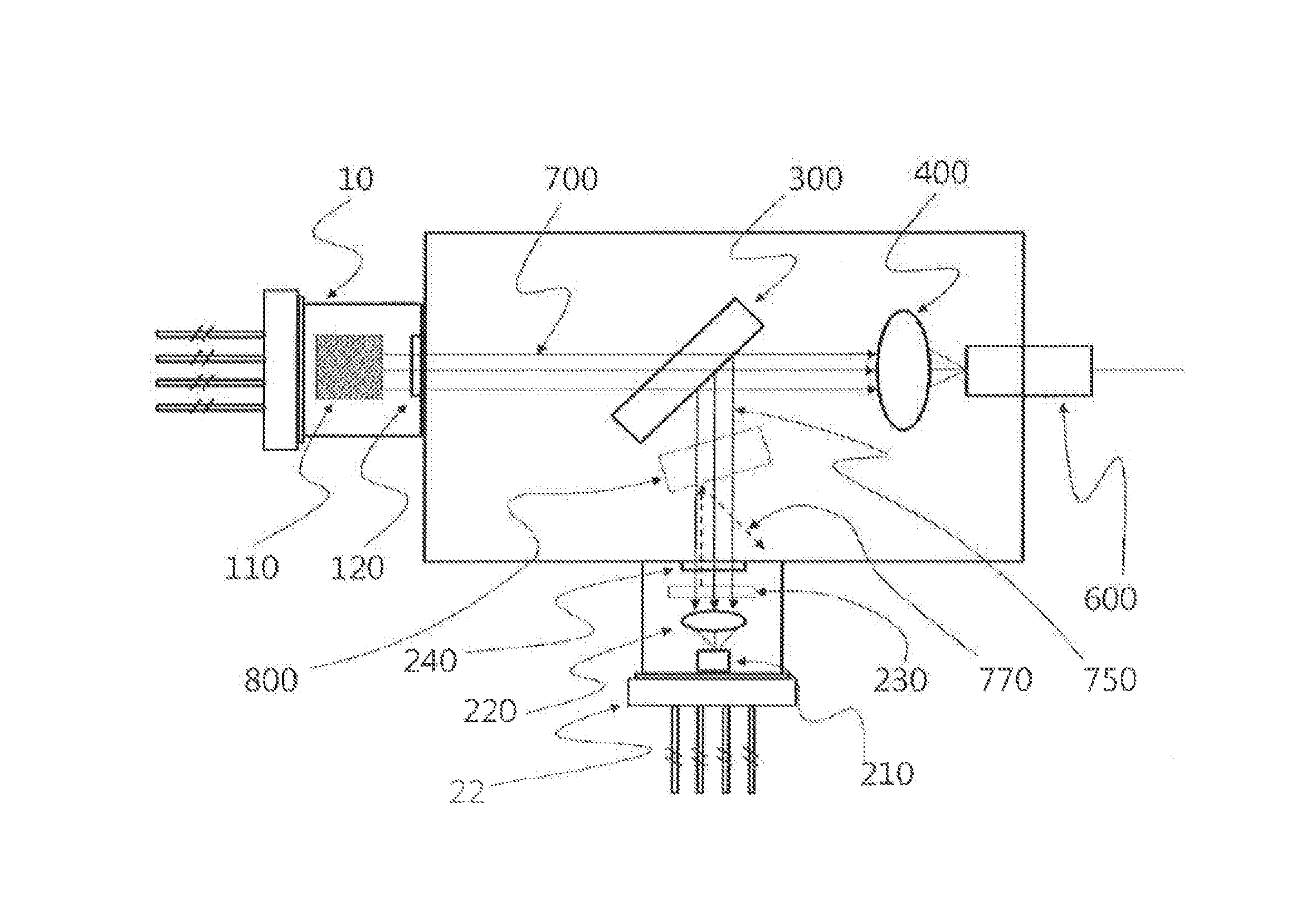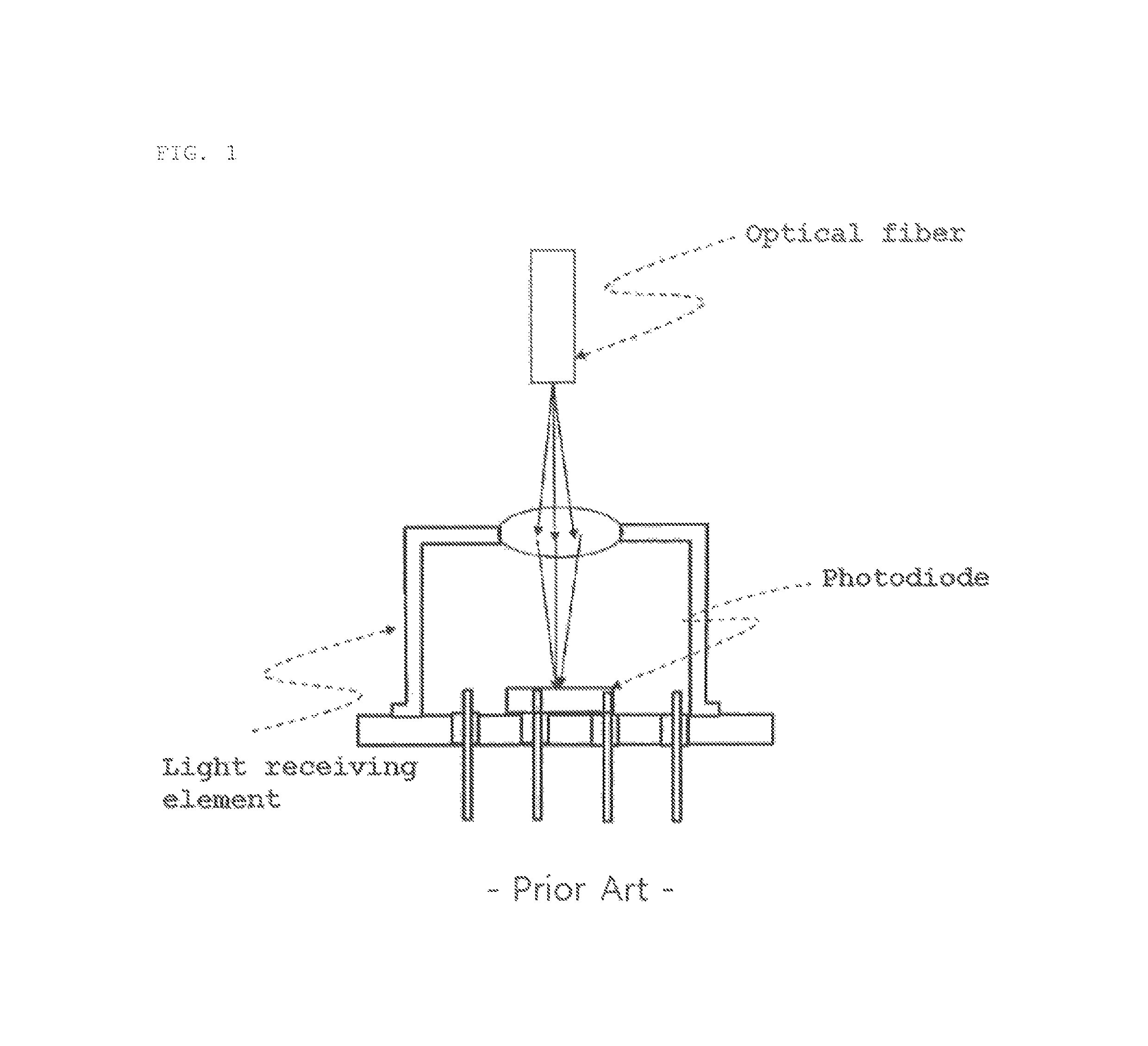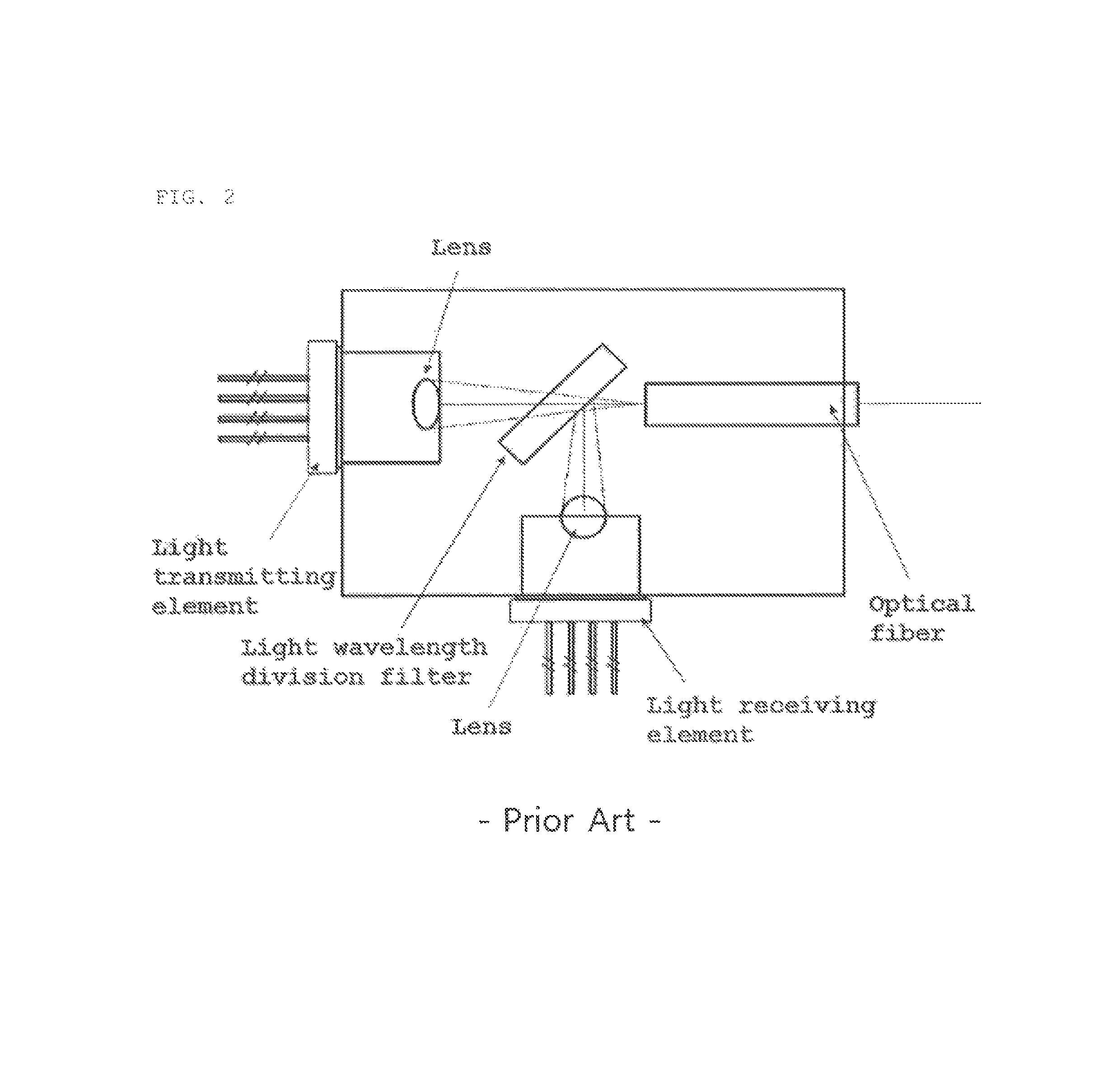Light receiving module having built-in wavelength-tunable wavelength-selective filter
a light receiving module and wavelength selectivity technology, applied in the direction of optics, instruments, optical light guides, etc., can solve the problems of low wavelength selectivity, difficult to know whether the laser light becomes parallel, and difficult to convert light having the features of emissive light outside the light receiving element into parallel light inside the light receiving element, etc., to achieve the effect of wavelength selectivity
- Summary
- Abstract
- Description
- Claims
- Application Information
AI Technical Summary
Benefits of technology
Problems solved by technology
Method used
Image
Examples
Embodiment Construction
[0019]Hereinafter, preferred embodiments of the present invention are described in detail with reference to the accompanying drawings.
[0020]FIG. 6 is a diagram illustrating the configuration of a light receiving element having a built-in wavelength-tunable wavelength-selective filter using parallel light according to an embodiment of the present invention.
[0021]As illustrated in FIG. 6, an optical signal is outputted as emissive light having a predetermined emission angle from an optical fiber 600. The optical signal from the optical fiber 600 is converted into parallel light through a lens 400 separated from a light receiving element 22. The optical signal converted into parallel light by the lens 400 separated from the light receiving element 22 travels into the light receiving element 22 through a flat plate-shaped window 240. A wavelength-tunable wavelength-selective filter 230 having a flat plate shape is disposed in the light receiving element 22 and only the light having wave...
PUM
 Login to View More
Login to View More Abstract
Description
Claims
Application Information
 Login to View More
Login to View More - Generate Ideas
- Intellectual Property
- Life Sciences
- Materials
- Tech Scout
- Unparalleled Data Quality
- Higher Quality Content
- 60% Fewer Hallucinations
Browse by: Latest US Patents, China's latest patents, Technical Efficacy Thesaurus, Application Domain, Technology Topic, Popular Technical Reports.
© 2025 PatSnap. All rights reserved.Legal|Privacy policy|Modern Slavery Act Transparency Statement|Sitemap|About US| Contact US: help@patsnap.com



